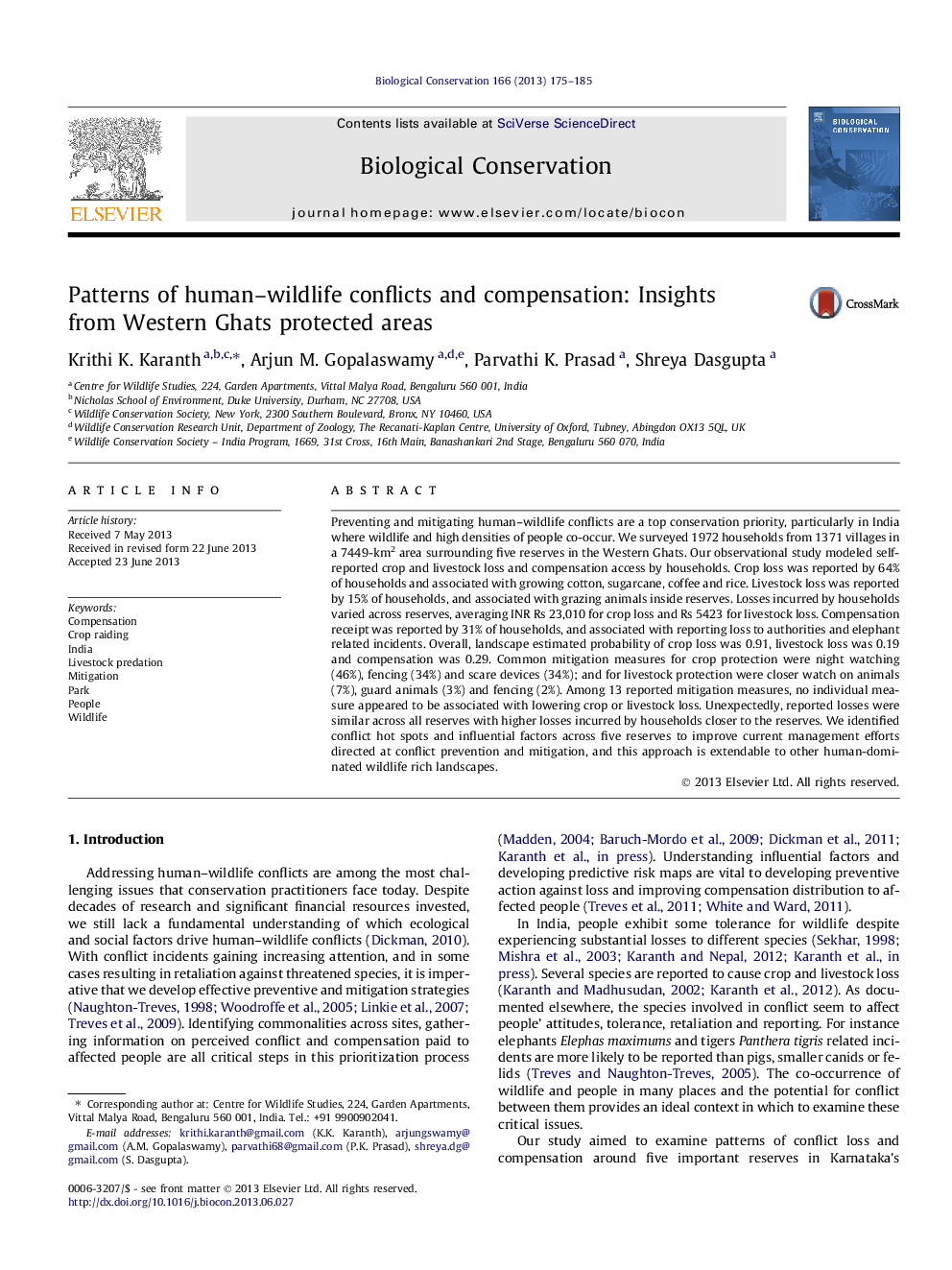| کد مقاله | کد نشریه | سال انتشار | مقاله انگلیسی | نسخه تمام متن |
|---|---|---|---|---|
| 6300790 | 1617935 | 2013 | 11 صفحه PDF | دانلود رایگان |
عنوان انگلیسی مقاله ISI
Patterns of human-wildlife conflicts and compensation: Insights from Western Ghats protected areas
ترجمه فارسی عنوان
الگوهای منازعات و جبران خسارت انسان و حیات وحش: بینش از غات غربی ها محافظت شده است
دانلود مقاله + سفارش ترجمه
دانلود مقاله ISI انگلیسی
رایگان برای ایرانیان
کلمات کلیدی
جبران خسارت، برداشت محصول، هند، شکار حیوانات، تسکین دهنده، پارک، مردم، حیات وحش،
موضوعات مرتبط
علوم زیستی و بیوفناوری
علوم کشاورزی و بیولوژیک
بوم شناسی، تکامل، رفتار و سامانه شناسی
چکیده انگلیسی
Preventing and mitigating human-wildlife conflicts are a top conservation priority, particularly in India where wildlife and high densities of people co-occur. We surveyed 1972 households from 1371 villages in a 7449-km2 area surrounding five reserves in the Western Ghats. Our observational study modeled self-reported crop and livestock loss and compensation access by households. Crop loss was reported by 64% of households and associated with growing cotton, sugarcane, coffee and rice. Livestock loss was reported by 15% of households, and associated with grazing animals inside reserves. Losses incurred by households varied across reserves, averaging INR Rs 23,010 for crop loss and Rs 5423 for livestock loss. Compensation receipt was reported by 31% of households, and associated with reporting loss to authorities and elephant related incidents. Overall, landscape estimated probability of crop loss was 0.91, livestock loss was 0.19 and compensation was 0.29. Common mitigation measures for crop protection were night watching (46%), fencing (34%) and scare devices (34%); and for livestock protection were closer watch on animals (7%), guard animals (3%) and fencing (2%). Among 13 reported mitigation measures, no individual measure appeared to be associated with lowering crop or livestock loss. Unexpectedly, reported losses were similar across all reserves with higher losses incurred by households closer to the reserves. We identified conflict hot spots and influential factors across five reserves to improve current management efforts directed at conflict prevention and mitigation, and this approach is extendable to other human-dominated wildlife rich landscapes.
ناشر
Database: Elsevier - ScienceDirect (ساینس دایرکت)
Journal: Biological Conservation - Volume 166, October 2013, Pages 175-185
Journal: Biological Conservation - Volume 166, October 2013, Pages 175-185
نویسندگان
Krithi K. Karanth, Arjun M. Gopalaswamy, Parvathi K. Prasad, Shreya Dasgupta,
